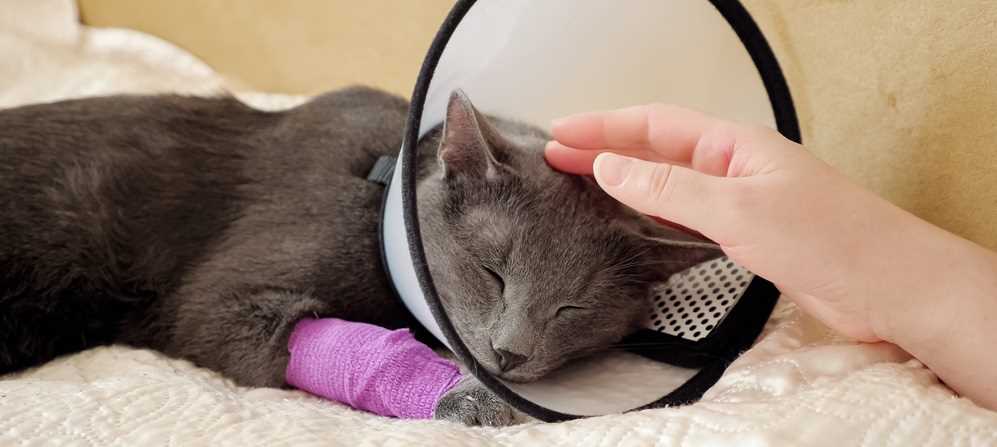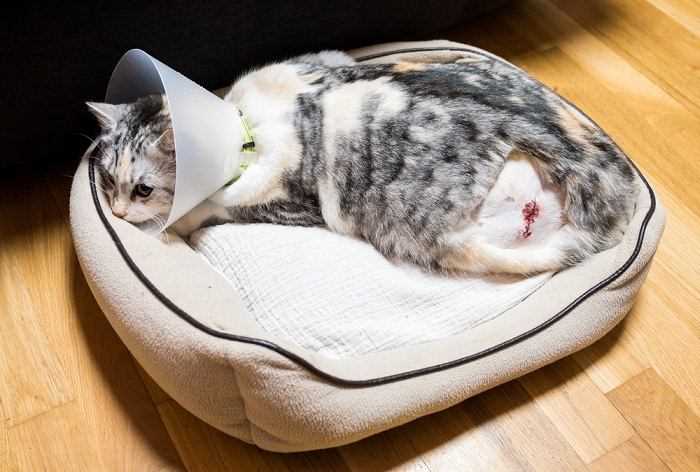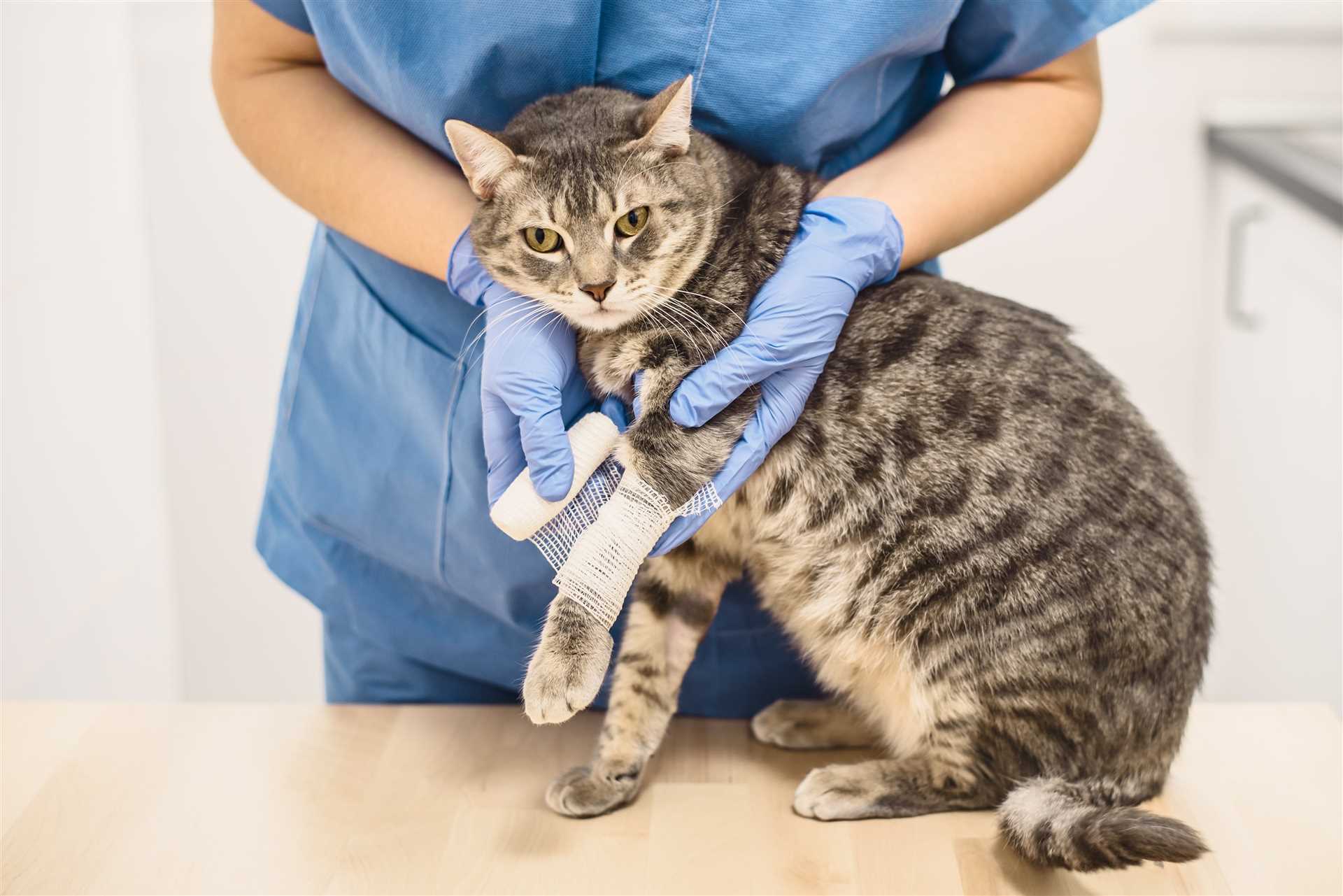



First things first, grab some clean water and a soft cloth. It’s essential to rinse the area gently to remove dirt and debris. I prefer lukewarm water, as it feels comfortable on my fur.
Next, apply a pet-safe antiseptic solution. Look for one that is specifically designed for furry friends, as human products can be harmful. A small amount on a cotton ball works wonders; just dab it lightly on the affected area.
After that, it’s important to keep an eye on the healing process. If my skin looks red, swollen, or has any unusual discharge, a visit to the vet is a must. Regular checks help ensure everything is healing properly.
Lastly, make sure I don’t lick the spot! You might need to use an Elizabethan collar if I can’t resist. Keeping me comfortable and monitored is key during this recovery phase.
Steps for Managing an Injury on Your Feline Friend
First, gather your supplies: sterile gauze, antiseptic solution suitable for pets, and bandages. Make sure to have treats on hand to keep your buddy calm and distracted.
Gently restrain your pal by wrapping them in a towel, leaving only the injured area exposed. This helps prevent sudden movements that could cause more harm or stress.
With a soft cloth, dab the area around the wound to remove debris. Then, apply the antiseptic lightly without rubbing, ensuring it covers the affected spot well. Avoid using hydrogen peroxide or alcohol, as they can irritate the skin.
Bandaging Techniques
If the injury is deeper or requires protection, use a piece of gauze to cover it. Secure it in place with a bandage, making sure it isn’t too tight. Check for any signs of discomfort or swelling.
Monitor the healing process closely. Change the dressing daily or more often if it becomes wet or soiled. Look for signs of infection like redness, swelling, or discharge. If you notice any of these, consult a veterinarian immediately.
Post-Care Tips

Keep an eye on your furry companion’s behavior. If they seem more lethargic than usual or stop eating, it’s best to seek professional advice. Offer some gentle playtime to help lift their spirits while they recover.
Assessing the Severity of the Cut
First, I check for how deep the injury is. If it’s just a surface scratch, I don’t worry too much. However, if I see blood flowing or a gaping wound, it’s time to get help. I also make sure to observe if there’s any swelling or discharge. Redness around the area can indicate an infection, which is a serious matter.
Signs to Look For

| Observation | What It Indicates |
|---|---|
| Minor bleeding | Superficial damage |
| Profuse bleeding | Deeper injury, possible vet visit required |
| Swelling | Possible infection or inflammation |
| Discharge | Infection likely present |
| Excessive licking | Pain or discomfort; may worsen the situation |
Behavioral Changes
If I’m acting unusually, like hiding or not eating, it signals that something is wrong. Pay attention to my movements; limping or reluctance to jump indicates discomfort. If any of these signs show up, it’s better to consult a professional for advice.
Gathering Necessary Supplies
To handle my little mishap, I recommend having these items at your paws:
First Aid Essentials

A clean cloth or sterile gauge pad is a must for dabbing. Have antiseptic solution ready, like chlorhexidine or saline, to help with irrigation. Tweezers can be handy for removing any debris stuck in the wound.
Comforting Tools
A soft blanket or towel will make my recovery more pleasant. If I’m squirmy, having a muzzle or soft restraint can keep things safe. Don’t forget treats for a calming distraction!
Calming Your Cat Before Treatment
I prefer a quiet space for treatment. Dim lights can help me feel more at ease, so finding a cozy corner is key. Soft music or gentle sounds can also create a soothing environment.
Before starting, I appreciate a slow approach. Letting me sniff the supplies before using them reassures me. I enjoy a gentle petting session to help calm my nerves. Speak softly to me, and avoid sudden movements, as this can startle me.
If I seem anxious, try offering a favorite treat or toy. Familiar scents, like a blanket or a piece of my favorite fabric, can also have a calming effect. Keeping my surroundings familiar helps me feel safer.
Consider using a calming spray designed for felines. Spraying a little in my space can help reduce stress. If I still seem restless, give me a moment to settle down before attempting any treatment.
Patience is essential. Rushing things will only make me more nervous. When I feel relaxed, the entire process will be smoother for both of us.
Cleaning the Wound Properly
First, I make sure my human washes their hands thoroughly. Germs don’t belong anywhere near my injury. They should use lukewarm water with soap for at least 20 seconds.
Next, they should gently rinse the area around the abrasion with clean water to remove any dirt or debris. It’s important to avoid using hydrogen peroxide or alcohol, as these can irritate the skin.
If there’s any fur around the injury, a pair of blunt-ended scissors can help trim it away carefully, preventing any further contamination.
Applying a mild antiseptic solution, like a saline solution, can aid in protecting the area. My human should soak a clean cotton ball in the solution and gently dab it on the wound without rubbing.
After the antiseptic, using a sterile gauze pad to lightly cover the wound can help keep it clean. If the injury is deeper, they might need to secure it with adhesive tape, ensuring it’s not too tight.
Lastly, it’s wise to keep an eye on the area for any signs of infection, such as swelling or discharge. Regular checks will help catch any issues early.
Applying Antiseptic and Bandaging
After ensuring everything is properly cleaned, it’s time to apply antiseptic. Use a pet-safe product specifically designed for wounds. Apply a small amount gently onto the affected area using a clean cotton ball or gauze pad. Avoid using alcohol or hydrogen peroxide, as these can irritate the skin and delay healing.
Choosing the Right Bandage
For bandaging, select a non-stick sterile pad that will keep the area protected. Depending on the size of the injury, you may need to cut the pad to size. Secure it in place with cohesive bandage or medical tape, ensuring it’s snug but not too tight to restrict blood flow.
Monitoring and Maintenance
Check the bandage regularly for any signs of discomfort or swelling. Change the dressing daily or if it becomes wet or soiled. If you notice any unusual discharge or worsening condition, contact a veterinarian. For additional nutritional support while recovering, consider options like wet food for cats with ibd.
Monitoring for Signs of Infection
Keep an eye out for changes around the wound. Signs that something might be wrong include:
- Increased redness or swelling
- Persistent discharge, especially if it’s yellow or green
- Unpleasant odor coming from the area
- Excessive licking or biting at the site
- Changes in behavior, like increased irritability or lethargy
If you notice any of these symptoms, it’s important to reach out to a veterinarian for further evaluation. Timely intervention can prevent a minor issue from becoming major.
While you’re keeping watch, maintain good hygiene around the area. Avoid letting dirt or debris come into contact with the wound. If you’re using cleaning supplies, ensure they are safe for pets. For example, you might wonder does a loofah really work as dish scrubber–it’s better to stick with pet-safe options.
Regularly check for any changes, and don’t hesitate to seek professional help if something seems off. Your buddy’s health depends on your vigilance!
When to Consult a Veterinarian
If you notice any of the following signs, it’s time to seek professional help:
- Wounds that are deep, wide, or bleeding heavily.
- Signs of infection, such as swelling, redness, or discharge.
- Persistent licking or biting at the area, indicating discomfort.
- Foul odor emanating from the wound.
- Behavioral changes, such as lethargy or loss of appetite.
- Inability to put weight on the affected limb.
- Any foreign objects embedded in the tissue.
Always trust your instincts. If something feels off, don’t hesitate to reach out for guidance. Timely intervention can make a significant difference in recovery.
FAQ:
What should I do first if I find a cut on my cat?
The first step is to assess the cut. Gently restrain your cat if necessary, and examine the wound for size and depth. If it is a minor cut, you can clean it at home. Use warm water or saline solution to rinse the area, removing any dirt or debris. Make sure to keep your cat calm throughout the process.
How can I clean the cut properly?
To clean the cut, use a clean cloth or gauze soaked in warm water. Gently wipe around the wound to remove any visible debris. If you have saline solution or antiseptic wipes specifically made for pets, you can use those as well. Avoid using hydrogen peroxide or alcohol, as these can irritate the wound and delay healing. After cleaning, you may apply a pet-safe antibiotic ointment if necessary.
What signs indicate that a cut on my cat might be more serious?
If the cut is deep, won’t stop bleeding, or shows signs of infection such as swelling, redness, or discharge, it may require veterinary attention. Additionally, if your cat seems to be in pain, is excessively licking the wound, or if the cut is located near the eyes or on sensitive areas, it’s best to consult a veterinarian promptly. Keeping an eye on your cat’s behavior can help determine if further action is needed.
Is it necessary to bandage a cut on my cat?
Bandaging a cut may be necessary if it is in an area that is prone to further injury or if your cat is likely to lick it. However, cats often dislike wearing bandages, and they can lead to more stress or anxiety. If you do decide to bandage, ensure that it is not too tight and check regularly for any signs of irritation. If the cut is minor and your cat is not bothering it, leaving it uncovered might be the best option.
How can I prevent my cat from licking a cut?
To prevent your cat from licking the cut, you can use an Elizabethan collar (also known as a cone) to keep them from reaching the area. Alternatively, you can distract your cat with toys or engage them in play to take their mind off the wound. Monitoring your cat closely is important, especially during the initial healing phase. If your cat is persistently trying to lick the area, consider consulting with a vet for additional options.











